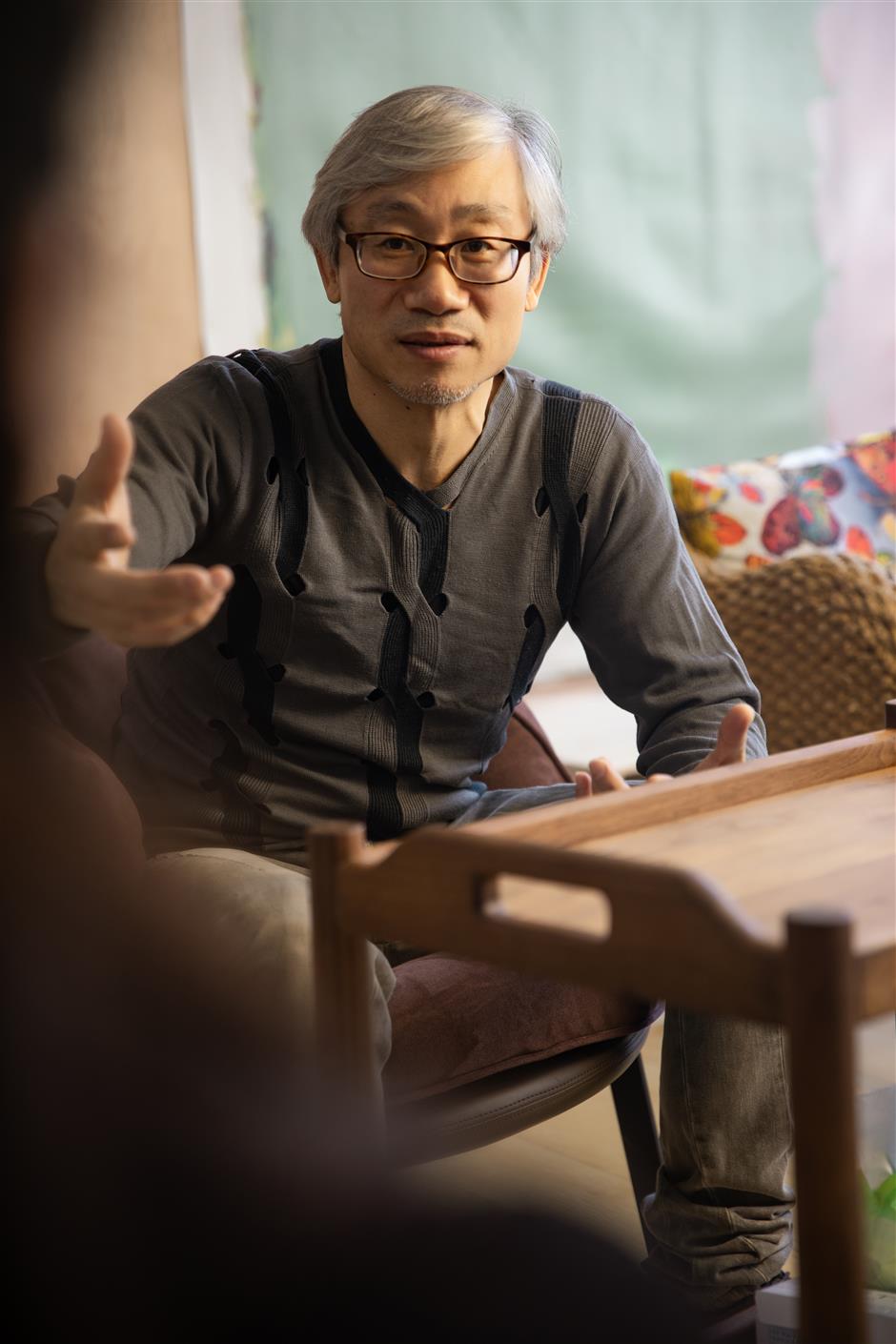After a decade, artist returns with graffiti paintings

"Guard a tree-stump, waiting for rabbits" by Shi Shaoping

"The fisherman's tale" by Shi Shaoping
Artist Shi Shaoping is back!
In 2013, his daunting installation work "Metamorphosis Egg" won sixth place in Designboom, the world's most popular digital architecture and design magazine, even higher than the widely popular "Rubber Duck" created by Florentijn Hofman.
Shi "laid" 3,000 white ceramic eggs in six remote settings across China. The whole process and final installation are photographed and videotaped for a final exhibition in Beijing.
But after that, the artist seemed to retreat from the spotlight.
Almost a decade later, Shi's solo exhibition will be unveiled at the Shanghai Spring Art Museum on April 28.
Titled "The Metamorphosis Series: The Infinite Images," the exhibition features a cluster of "graffiti narration" paintings.
At first sight, his new graffiti paintings resemble kid's doodling, echoing Picasso's saying "It took me four years to paint like Raphael, but it took a lifetime to paint like a child."
It might be interesting for viewers to unriddle the familiar Chinese idiom or fable in Shi's tableau.
Different from his peers, his renderings don't exactly cater to the market or collectors.
"There is always a threshold for art," Shi said. "I don't expect that my art will be accepted by everyone."
Born in 1968 in Jiangxi Province, Shi graduated from the Department of Stage Design at the Shanghai Theater Academy in 1995.
A few years later, he became head of the Shanghai Song and Dance Troupe. Surprising many, he later quit his job and chose to be a professional artist.
"I never regretted my decision," he said, "because I found the greatest enjoyment in art."

Q: It's rare that an artist shies away from the spotlight for nearly a decade, what did you do during that period?
I was self-cultivating and finding the "bigger picture" in my mind.
Q: Graffiti is usually unrestricted. How do you fuse those narrative elements into it?
The graffiti narration is utterly different from the traditional realism.
A classical narration is quite elaborate, telling a story through various details, like the pattern of the cloth of a character or the facial features of a character. However, graffiti, on the other hand, is loosely based. It's the interweaving and overlapping of labels, symbols and images that reveal the inner worlds and complex emotions of the characters. It also allows the viewers to participate in the story, filling in the gaps in the presentation through their own imagination and understanding.
Q: Many graffiti artists used to work outdoors, such as on walls, buildings, underground passages. The act of painting and the results presented seem to be more involved with the public, how do you see the difference between outdoor graffiti and graffiti inside a museum?
Graffiti began as an outdoor activity and was created surreptitiously on public walls. At that time, many thought that graffiti was "polluting" the environment. Sometimes the police would come and arrest the painters, so graffiti had to be done very quickly. In fact, the beauty of graffiti also lies in such unrefinement. It was the whole process that made graffiti art develop and flourish. Later on, it appeared on trains and in high-end communities abroad. Why? Because a lot of art is too "calm," whereas graffiti is a concept where passionate energy flows out instantly.
There are many major graffiti artists abroad, such as Tom Bray, Basquiat, Kessler Haring and Banksy, who all started out as outdoor graffiti artists and went on to do indoor graffiti.
Q: There are snakes, rabbits and elephants in your paintings, which are derived from fables and idioms, with names coming from tales, such as "The Farmer and the Snake," "The Blind Man Touching the Elephant." Is this merely the narrative content for a certain scenario, or a self-reflection?
There's so much to understand: where is art going? what are you pursuing?
With a history of 5,000 years, China has a profound cultural background, including idioms and fables. In my eyes, its ancient meaning, rather than being outdated, is still appealing today.
Q: What does art mean to you?
It is somewhere I can turn to when I'm down, and it is somewhere I can release myself when I'm up.

"Mr Dong Guo" by Shi Shaoping
Exhibition info:
Date: April 28-May 28 (closed on Mondays), 10am-5:30pm
Venue: Shanghai Spring Art Museum
Address: 665 Fuzhou Rd
福州路665号















